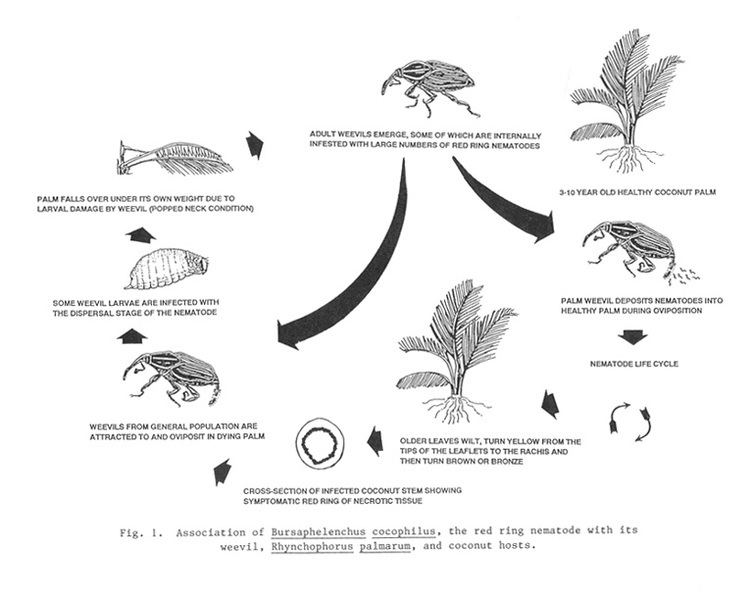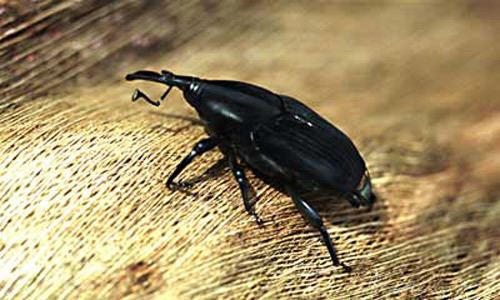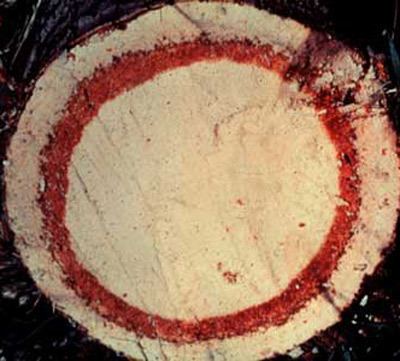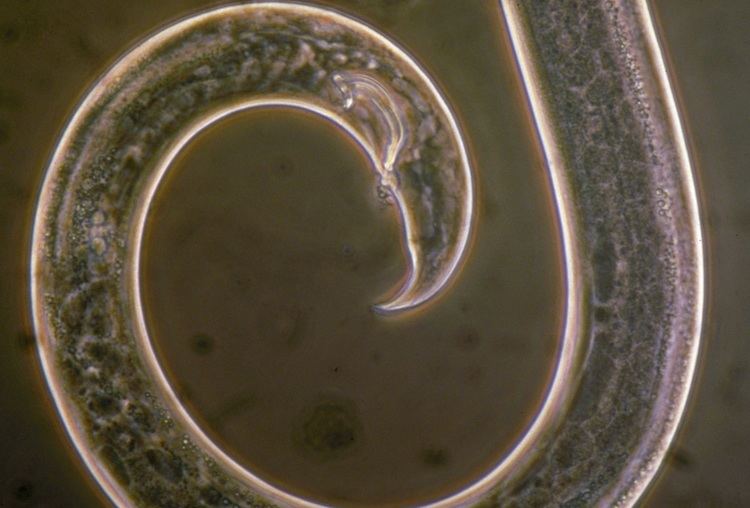Kingdom Animalia Rank Species | Phylum Nematoda Subclass Tylenchia Superfamily Aphelenchoidoidea | |
 | ||
Similar Rhynchophorus palmarum, Bursaphelenchus, Tirathaba mundella, Rhynchophorus, Tirathaba rufivena | ||
The red ring disease of coconuts and African oil palms is caused by the nematode Bursaphelenchus cocophilus. It is also identified in literature with an alternative scientific name Rhadinaphelenchus cocophilus. The common name, the red ring nematode, is derived from its distinguishing symptom.
Contents
- Significance
- Distribution
- Identification
- Life cycle
- Insect vector relationship
- Host parasite relationship
- Management
- References

Significance
This nematode can cause losses up to 80%, however, the losses typically range from 10-15% on coconut palms and oil palms.
Distribution
This nematode is distributed in Central and South America, and some of the islands in the Caribbean.
Identification

The distinguishing characteristics of this nematode are a well-developed metacorpus from J2 through adult, a short stylet 11-15 um in adults, adults typically 1mm in length. Females have the vulva located two-thirds body length and have a vulval flap. Females have a long post uterine sac and a rounded tail. Males have seven papillae in the tail region, distinct spicules, and bursa shaped as a spade.
Life cycle

The red ring nematode follows a typical plant parasitic life cycle, having 4 molts before becoming an adult. The whole life cycle lasts approximately ten days. The survival stage is the J3. The dissemination of this nematode depends on its relationship with its vector.
Insect vector relationship
The vector, Rhynchophorus palmarum (the South American palm weevil), carries the J3 stage to healthy palms. Female weevils are internally infested around the oviducts, when they lay their eggs in the palm they also disseminate the nematode.
Host-parasite relationship
The symptoms produced by this nematode are chlorosis beginning in the oldest leaves and a distinct red/brownish ring in the trunk of the tree.
Management
To manage this disease scouting is the most important aspect; early detection of infected trees may save plantations. If an infected tree is found it must be removed, treated with herbicide and cut down. Leaving the stump behind can lead to vector reproduction and spread the nematode. Trapping the vector is another strategy, reducing the disease incidence from 10% to 1%.
